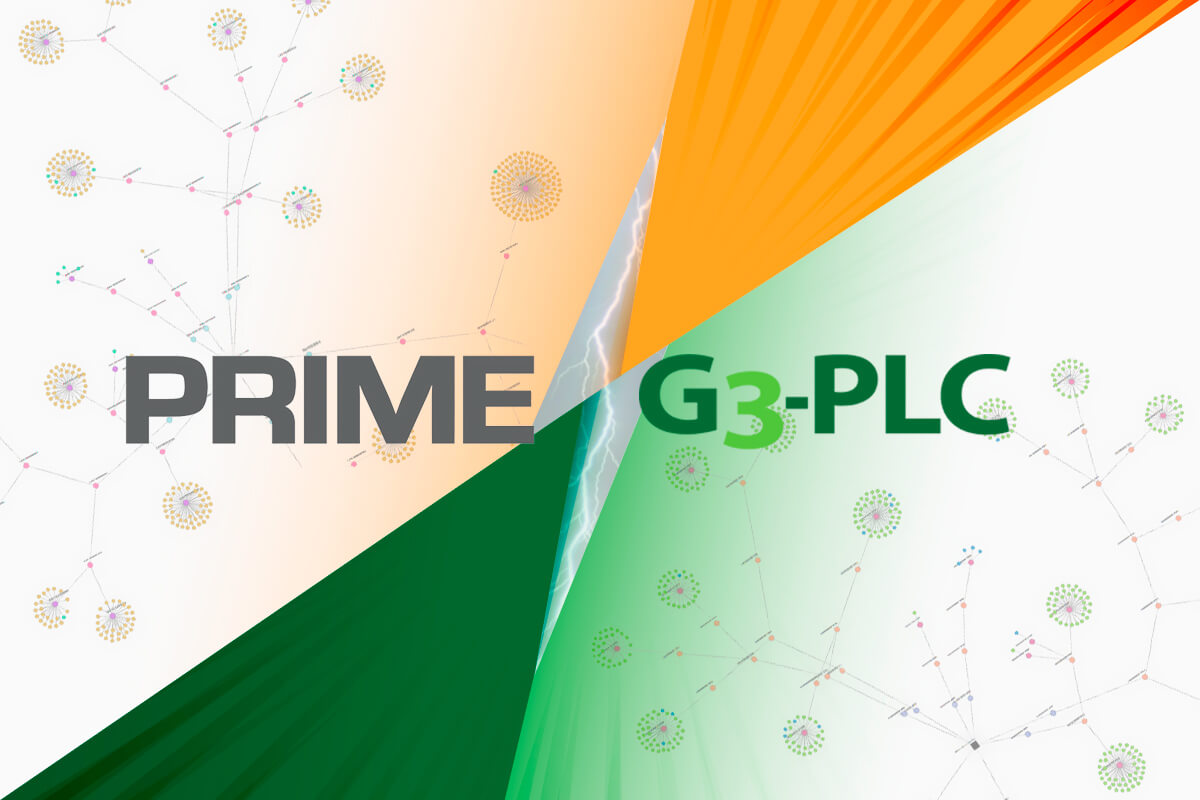Prime and G3-PLC are international standard technologies with a global application. Both are designed to communicate directly over power lines, and each carries a number of distinct advantages different from each other.
For example, PRIME has a high data transfer rate – up to 141 Kbps and the ability to monitor the PLC network in real time. And G3-PLC is able to transfer IPv6 packets to the Internet, work with various types of equipment and has a robust mode able to eliminate noisy carrier frequencies.
Some of G3-PLC features are more sophisticated and require more time to be structured on the physical level. This is more observable on transformer substations with more than 300 metering points. G3-PLC uses algorithms for building a topological network different from PRIME, which allow bypassing noisy areas or meters inaccessible for communication during a data collection session, which significantly reduces its speed for information exchange, which causes delays in data collection.
Therefore, the G3-PLC does not always cope with polling a large number of counters, since the concentrator does not have enough time to collect data and the session ends up incomplete.
This conclusion is confirmed by the experience of ADD Grup in using both technologies in the Czech Republic in the Prague Electric Network, where the goal was to collect 1-minute data from a large substation with a capacity of 550 users. Initially, G3-PLC was installed, but after negative performance due to the specific limits of this technology, it was decided to switch to PRIME, which successfully managed data collection in 1 minute, 10 minutes and 24 hours with 100% efficiency.
The experience of colleagues from the power grids of France and Austria also demonstrates certain difficulties in the operation of the G3-PLC in substations with a large volume. So, according to one of Enedis presentations at a substation with 800 customers, they needed additional work on noise suppression, elimination and setting the additional equipment, which ultimately provided only 90% of registration and data collection from meters.
Another example is Poland, at the largest substation of 947 smart meters, with a rate of 98% of data collection, where PRIME technology was installed.
However, the G3-PLC shows the best data collection results in noisy areas with up to 300 smart meters per substation. Due to its robust mode, it is able to reach the most distant and noisy smart meters.
This statement has been proven by the experience of ADD Grup in Latvia. For certain tests, 140 meters per substation and additional noise reduction equipment were installed. Regardless of whether noise reduction equipment was used or not, the results were always the same – 100% data collection and 98% instant responses to queries.
Don’t forget about the PLC+RF Hybrid solution. By ADD Grup experience of using a Hybrid solution based on G3-PLC in combination with RF channel in the harsh conditions of Russian networks, where are installed 400 smart meters per substation. At the moment, the real experience of using the hybrid solution shows 98.5% of daily and hourly data collection. A huge advantage of this technology is the automatic switching of communication modes when one or a group of meters is formed, which are difficult to pass the signal. They easily bypass problem areas using a radio channel.
«Field experience with large G3-PLC Hybrid deployment in a harsh grid in Russia»
In conclusion, we can say that the use of both technologies has a number of advantages, since progress does not stand still and both technologies are constantly being improved by the engineers of their alliances. Each technology shows excellent results and can work either alone or in tandem with each other, depending on the DSO’s needs, due to the versatility of the platforms on which both PRIME and G3-PLC can be installed.

